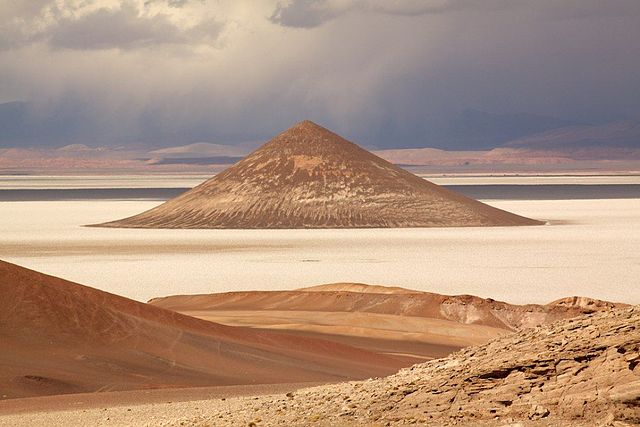Salar de Arizaro is a large salt flat of the Andes in north-western Argentina.
It is located between the villages of Tolar Grande and Caipe and near Mina La Casualidad, in Los Andes Department, Salta Province.
A view of the Salar de Arizaro
The dry lakebeds and yardangs in Salar de Arizaro, imaged by NASA's Earth Observing-1 satellite. In the upper left corner, small rounded bumps in the landscape are yardangs, dusty hills formed when soft rocks are weathered and abraded by winds. The yardangs are aligned precisely with the northwesterly winds. On the right, bulbous hills have sharps edges, a formation typical of salt weathering around the base. During salt weathering, rocks are eroded by repeated salt crystal growth. The eroded material has been blown away by the strong winds of the high desert, leaving the sharp edge.
Cono de Arita in Salar de Arizaro
Cono de Arita
Salta–Antofagasta railway
The Salta–Antofagasta railway, also named Huaytiquina, is a non-electrified single track railway line that links Argentina and Chile passing through the Andes. It is a 1,000 mm metre gauge railway with a total length of 941 km, connecting the city of Salta (Argentina) to the one of Antofagasta (Chile), on the Pacific Ocean, passing through the Puna de Atacama and Atacama Desert.
A train near the passing loop of Pascua, 2019
Image: Salta antofagasta railway
engineer Richard Maury (third from left) with railway workers in Salta
Train at Augusta Victoria station







